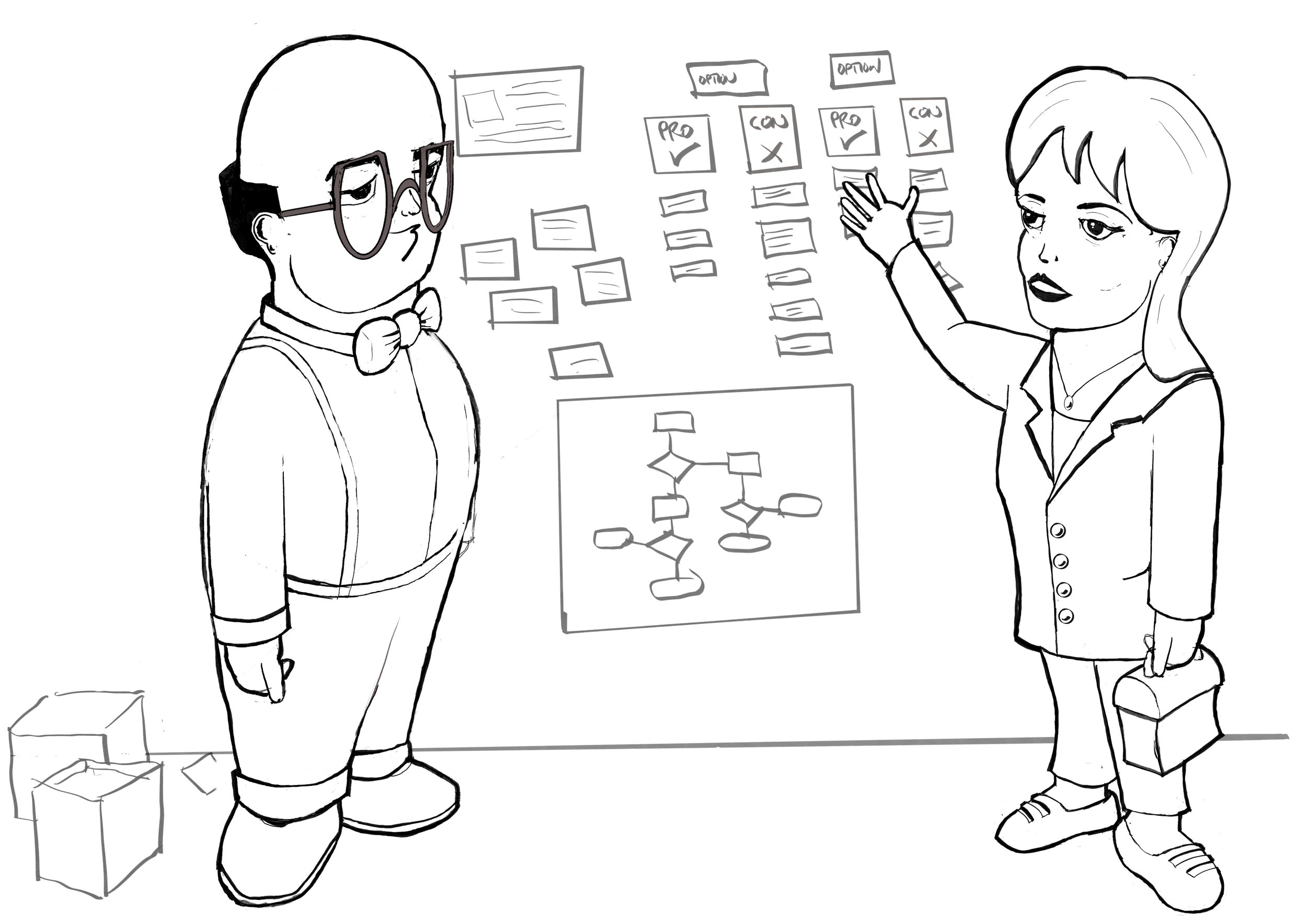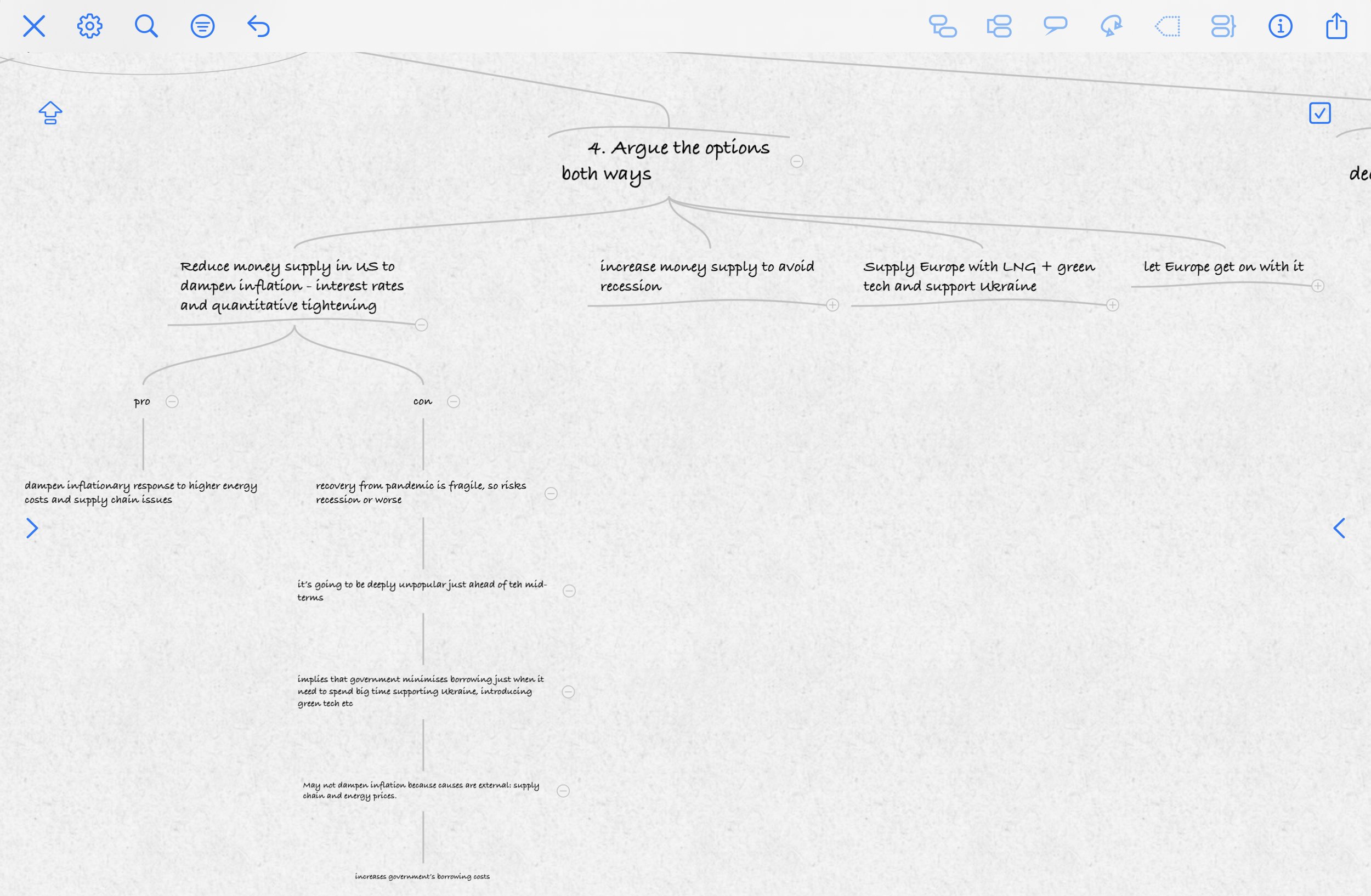Professor Wehle’s Think Like a Lawyer Tackles Solving the Big Problems
Professor Kim Wehle’s book, “Think like a lawyer’, doesn’t attempt to turn you into a lawyer. It’s about how anyone can use the approach she teaches to take apart and solve problems of all sizes:
- how to survive a divorce with your dignity intact
- what to do if a hotel ruins your holiday
- How to respond if a competitor pays the dubious compliment of copying your IP.
Although the book refers to legal cases, they’re not there to teach law. Each is an example of how the approach works in the real world.
I liked it enough to read the book cover to cover. It definitely offers a strategy that anyone can apply.Even better, it works well with mind mapping.
With that in mind, I took Professor Wehle’s framework for a spin using the iThoughts mind mapping app on an iPad. What problem should I solve, I asked myself, and the obvious answer was … tell you in a minute.
My only link to Professor Wehle is that I bought her book.
The B.I. C. A. T. framework
I’m not going to go into too much detail on this. I’m certain that Professor Wehle would prefer that you buy her book. Here’s a non-affiliate link:
Here’s the 50,000 feet view.
1. Break the problem down.
2. Identify your values and aims.
3. Collect all the information you can.
4. Argue both sides of every point.
5. Tolerate the reality that not everyone will agree with your choices. Even you might feel conflicted.
None of that is rocket science. Humanity has been breaking down problems (and enemies) into smaller pieces since living in a cave made you posh.
It does draw attention to many things that people ought to do, but usually don’t. I would suggest that people only make a halfhearted attempt at step 3 and don’t consider step 4 at all. Why would they, since they’re obviously right? Any idiot should realise that.
Step 5 is only obvious if you know about [the Dunning-Kruger effect.] (The more you know and understand about life, the less certain you become.) Feeling conflicted might actually be a good sign because you understand the pickle you’re in!
I applied it to this.
The best way to gauge whether a methodology has value is to use it. A try-out shouldn’t involve anything mission-critical, so I chose a huge issue to which I’m an interested observer only.
> What should the United States do about the global energy crisis?
Before you groan and move on to that article on how 5 simple habits will turn you into a TikTok ballet star, relax. I’m not going to dive into hardcore economics, only a few big issues.
My mind mapping app of choice currently is iThoughts. I have no connection with the developer, apart from buying the app. It doesn’t matter which mind mapping app you use, as long as you’re comfortable with it.
Step 1: Break down the problem
This initial step, if I’ve read the book correctly, is to pick out the big issues. I picked out the rising cost of living for US consumers and the challenges facing US allies.
That might seem like a small step. Sometimes, however, the real issues can be obscured by detail and emotion. In a divorce scenario, for example, both parties are hurting and angry. It would be easy to overlook the real issues, and spend lots of money on lawyers resolving the wrong problems.
Writing them down can be a big step forward. It encourages you to think clearly and allows others you to sense-check your perspective. Don’t be surprised if you have to refine or revise them as you work through the process.
Having identified the big issues, attempt to break down them into something more manageable. In my case, I did a Google search on “USA cost of living”. To no one’s surprise, I got many matches, but Ameriprise provided a nice summary.
Professor Wehle’s intent is to “deglob” the problem you’re facing. A massive glob of a problem can be overwhelming, but identifying its components gives you a way in. Here I picked out:
- a reduction in growth
- heating and energy costs
- transportation costs
- knock-on inflation
- $5 a gallon gasoline.
Here’s what I picked out for effects on America’s allies.
My Google search drew out the extent to which Europe depends on Russian fossil fuels, and its determination to remove that dependency. Having a shooting war in your backyard focuses minds.
As I say, there is a huge amount of information out there, but this was enough for my purposes.
Step 2: Identify values and aims
This is where using a mind mapping tool makes managing this process easier. I folded up Step 1 and started to work on values and aims.
What’s the difference between a value and an aim? I interpreted value as meaning a principle you believe in on an ongoing basis. I understood an aim to mean an outcome.
This is what I came up with.
Looking at the list of values again, I’d summarise it more. Maybe:
- It’s the economy, stupid, for the domestic agenda
- America wants strong allies
- America wants to maintain global leadership economically and militarily
Coming up with aims was simpler because the points of pain were more obvious. Step 1 helped with that because it forced me to look for specifics.
Getting step 2 right makes steps 4 and 5 a lot easier. It helps you understand what good looks like.
Step 3: Collect as much information as possible
I didn’t do anything on this step because I’d already collected so much for step 1, and this is just a trial run. If I were doing this for real, this could take up most of the effort required.
As a side note, information doesn’t just mean facts. It also includes rules and regulations.
Step 4: Argue each side of options
What are your choices? It will depend on the situation and may change with time. In my pretend scenario, I decided to limit the number of options to three, and I’ve only expanded one option, reduce the money supply.
I had been convinced that governments on both sides of the Atlantic had to bear down on inflation. Interest rates should go up, and government borrowing should fall. Stop spending money you don’t have.
I started listing the reasons not to do that, and many sprang to mind.
- It risked derailing a fragile economy
- it curtails government investment in green technology
- Ukraine needs more resources
- It would deepen the government’s unpopularity ahead of midterm elections.
- It might not even work. Supply chain issues and energy costs are driving inflation, not excessive domestic demand.
- And so on.
Surprisingly, I couldn’t think of much to say in favour of shrinking the money supply. Global factors are driving inflation. Any measure internal to the US could only have an indirect effect.
I cross-checked my pros and cons with my values and aims. A crucial aim was to control inflation. Why? It affects consumers cost-of-living, and we need to keep them on side.
Inflation can’t be ignored, but the money supply remedy risks recession and probably won’t work. Controlling inflation means ending the war in Ukraine, which supports intervention in Europe.
See? It’s easy.
Step 5: Tolerating criticism and self-doubt
In the context of this dummy run, criticism and self-doubt are moot, as I’m nowhere near the controls of the US government. That clearly is a good thing.
If you were doing this approach for real, this would be an important step. There are few areas of life where you won’t face criticism if you try to do something. I would interpret tolerate as meaning, prepare for it. Think about who you have to get on side.
Is it a good approach?
Definitely. As I wrote earlier, it’s not rocket science, but it nicely brings together what you should do. It’s clear and flexible.
Since reading the book, I use the methodology to research articles. It’s easy to get bogged down in the reading phase. You forget that you’re there to sift out what’s significant and answer the question, so what?
Professor Wehle’s approach is great for that.
Was it worth using a mind map app?
Absolutely. This exercise gathers much information and offers many choices. It is highly unlikely that the first cut will be the definitive best answer, so being able to edit and manipulate is invaluable. Actually, it’s essential.
Does it have to be iThoughts? No, not at all. Any competent mind mapping tool will do, but I enjoyed using iThoughts for this exercise. It’s easy to annotate the mind map as it evolves, for example.
Is it worth reading the book?
I vote yes! This was a limited road test. You’ll find it fully expanded and explained in the book. The book is short and written in plain English.
You could be thinking like a lawyer in a few short days. Think of what that will do for your hourly rate!
This blog is a sample of my work on Medium. You can get access to all of Medium’s content by subscribing via this referral link. This won’t increase your subscription fee, but I will receive a small proportion.
https://willjmurphy.page/membership





